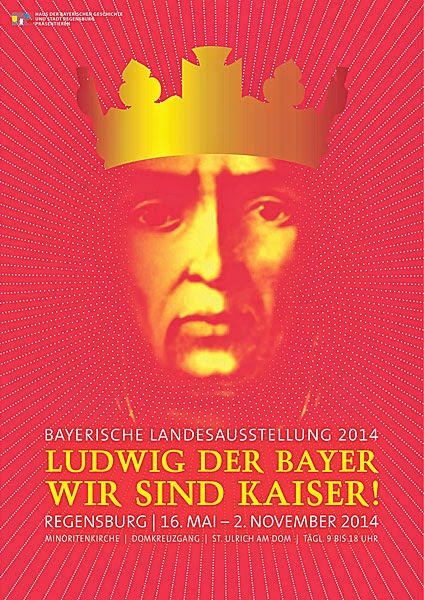Medieval and Renaissance tapestries on view at Esztergom
 |
| Calvary Tournai, late 15th century Esztergom, Christian Museum |
An exhibition of tapestries has been on view at the Christian Museum in Esztergom since May. The Museum holds a significant collection of tapestries, and together with the co-organizer - the Museum of Applied Arts in Budapest - they have put on display a good selection of early tapestries.The present exhibition entitled ‘Historical and Contemporary Tapestries in Hungary’ is presents the past and present of European woven tapestry, illuminating the connections also. From the perspective of a medievalists, the first section of the exhibition is the most interesting, which is titled ‘Flemish Tapestries with Biblical and Mythological Themes from the Museum of Applied Arts and the Christian Museum’. Here one of the genre’s most significant traditions – the Flemish – is represented by Oudenaarde and Tournai tapestries kept at the Christian Museum and by the 18th-century Brussels tapestry ‘Mercury Hands Over the Infant Bacchus to the Nymphs’, a work preserved at the Museum of Applied Arts. It is through this work that the rest of the exhibition - showing contemporary works - is connected to historic tapestries, via the "Web of Europe" project. The exhibition can be visited until the end of August, and is accompanied by a catalogue.
Museum of Fine Arts in Budapest purchases an early Renaissance carving

The blog of Hungarian museum journal MúzeumCafé reported that the Museum of Applied Arts in Budapest had purchased an important French early Renaissance carving at an auction last week (June 5). The stone relief was once part of the famed collection of Rudolf Bedő, and was auctioned at Kieselbach Gallery and Auction House. Another medieval sculpture from the collection - a Burgundian Madonna - was also offered for sale. This news comes just a few months after the long overdue re-opening of the permanent exhibition of the Old Sculpture Collection of the museum (see my report from December) - the piece is clearly a welcome addition to this important collection.
I will list a few smaller exhibitions here as well - with link to Hungarian-language reports
- After an absence of several years, the Roman and Medieval lapidarium reopened at the Balaton Museum in Keszthely, more info here.
- An exhibition of a medieval silver treasure hoard from Poland - the Hoard of Głogów - is on view at the Déri Museum in Debrecen, along with an important silver hoard from 13th century Hungary.
- Finally, the exhibition about Queen Gertude - on which I already published a report - is on view for a few more weeks at the Lower Castle (Solomon-Tower) of the King Matthias Museum at Visegrád.




_7.jpg)



















